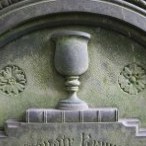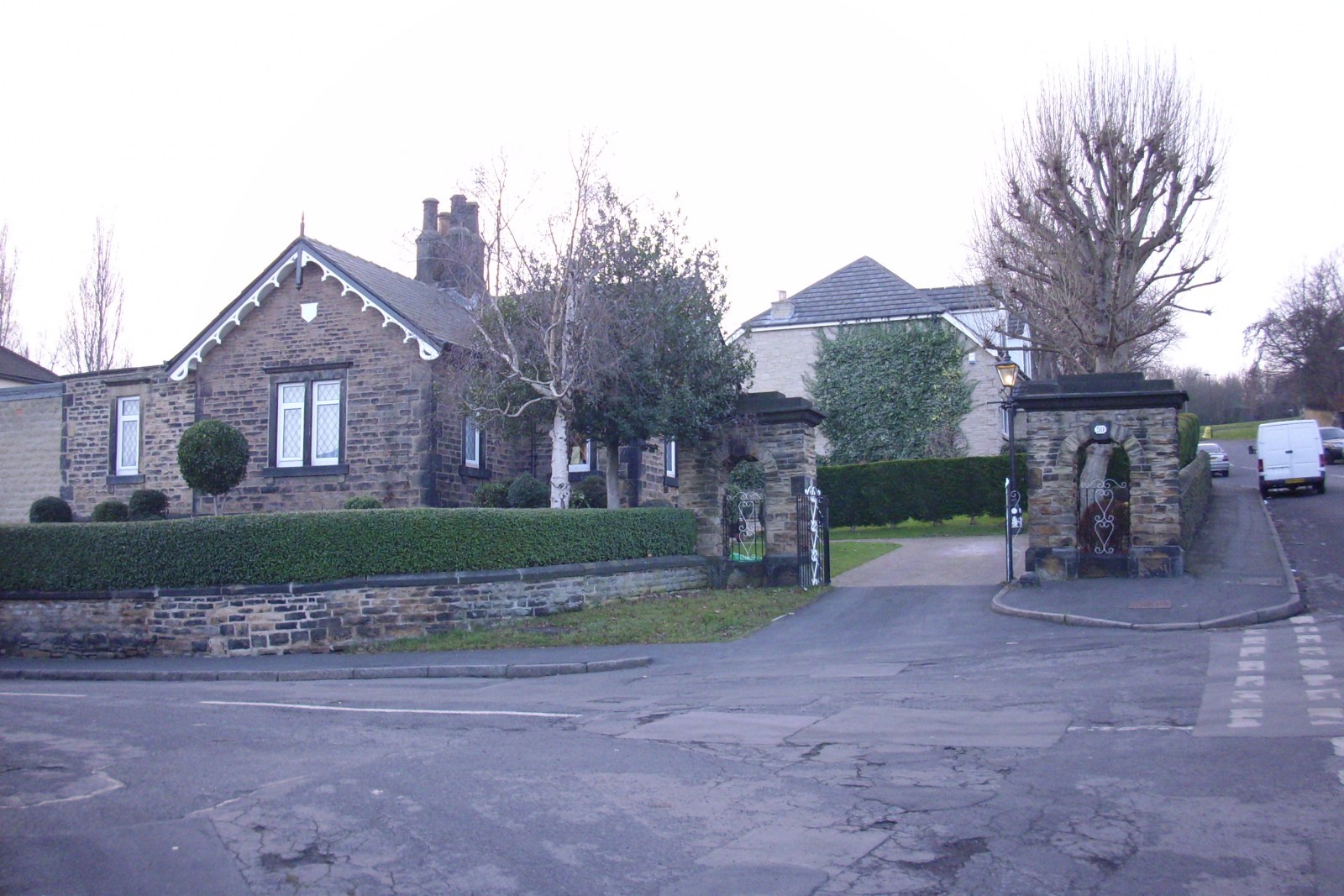Search the Community
Showing results for 'coal pit lane'.
Found 10,020 results
-
Hello, These are a terrific set of pictures. I grew up on Stanley Street so my recollection of the Wicker is from a very early age, say 1941-2 until we moved from the area in 1960. As other have said, the Arch dominated the whole area. I was in Sheffield just before Christmas and took a walk down the Wicker. Its now a shadow of what it used to be. Your excellent photgraphs and the commentary by others on this topic jogged my memory on a couple of things. One thing was the bomb going throught the main Wicker arch itself. On the night of the first blitz raid, my family was in Shelters located on the corner of Stanley Street and Joiner Lane. Shelters are of course long gone, but the brick wall that surrounded them was still there in December. During the raid, incendary bombs fell on Wood's timber yard over on Nusery Street and the ARP and police made us move to a shelter under the old cutlery works on Andrews Street. This old building was only demolishe 2/3 years ago to make way for the new link road that crosses the Wicker. During the raid a bomb fell and there was tremendous explosions. The building seemed to move and all the supposedly blast-proof doors were blown open . I always assumed that this was the bomb that went through the arch. The other thing was the arch itself. In earlier photos, you can see the arch has a stone parapet but in the later pictures, the parapet has gone replaced with a hand rail. All the stones that had formed the parapet were dumped on waste land in Andrews Street soon after the Blitz. Whether they were blown of in the raid itself or removed as safety precaution nobody seemed to know. I see a replacement stone parapet was installed during the recent renovations. I think the photograph of the tram about to go under the arch is quite rare. This is a double deck Rotherham Tram, not one from Sheffield. They were designed to just go in one direction (left to right in the photo) although they did have controls on the rear platform for reversing over short distances. I only ever saw one Rotherham double decker but there were several single deckers running on the service until it was eventually replaced with buses. This was when the bridge over the railway at Tinsley, started before the war and never finished, was finally completed, in I think 1948. Regards
-
More 1854 updates, none included in the Main records on here. George Marsh Peacock Knowl top, Stannington Charles Crookes Phoenix High Lane, Ridgeway (previously 1951) Mrs Martha Punshon Plumpers Tinsley John Rushby Robin Hood and Little John Little Matlock (previously 1861) John Goodwin Rose and Crown Eckington (previously 1905) George Rose Rose and Crown Wadsley (previously 1881) John Lingard Shoulder of Mutton Worrall Samuel Colley Sportsmans Wadsley 1854, 1856, 1861 John Booth Sportsman Main Street, Hackenthorpe (previously 1901) Luke Furniss Sportsman Stannington (previously 1881) That's it for now, like I said, slow work.
-
More 1854 updates, none included in the Main records on here. George Staniforth New Inn Hackenthorpe (previously 1901) George Turner New Inn Wadsley Bridge 1854 and 1856 (previously 1861) Richard Dolby Birkett New Market Inn 13 Castle Folds 1854, 1856, 1861 and 1862 Richard Brereton Norfolk Arms 26 Dixon Lane 1854, 1856, 1861, 1862 Mrs Ann Hellewell Norfolk Arms Nether houses, Grenoside, Ecclesfield (previously 1881) James Dearman Old Cricket Ground Darnall (previously 1871) George Ellse Crown Brightside Samuel Stones Old Crown 101 High fields (previously 1862) John Smith Old White Lion 3 Wicker
-
More 1854 updates, none included in the Main records on here. John Green Fleur de Lis Totley, Dore (previously 1891) William Wilson Fox and Duck Marsh Lane, Ridgeway (previously 1951) Mrs Elizabeth Crooks Freemasons Arms Hill Bridge, Nether Hallam Samuel Stones Gardeners Arms Occupation Road 1854, 1856, 1861, 1862 Mrs Tabitha Loy Gate Limestone Green, Oughtibridge George Drabble George Hill Top, Dungworth (previously 1901) William Child Milton Hotel 14 Milton Street (previously 1862) William Hattersley Miner’s Arms Dronfield, Woodhouse (previously 1901) Mrs Elizabeth Plaxton Napoleon Greenlane
-
John Machon Cup 17 Dun Street Mrs Ann Mellor Cutler’s Arms 7 New Church Street George Miller Cutler’s Arms Attercliffe John Cadman Devonshire Arms 23 South Street Mrs Sarah Radford Devonshire Arms 60 Ecclesall New Road Samuel Champion Dog and Gun 18 Headford Street John Sephton Dog and Partridge Attercliffe Joseph Wild Dog and Partridge 56 Trippet Lane Henry Tasker Dore Moor Moor, Dore (previously 1901)
-
No it wasn't....this is the Gateposts topic !! Anyway - if I remember correctly Greenoak House stood opposite the top of Mickley lane and I think it was there before 1875. Sando - if this isn't a quizz perhaps you could tell us where you took that photo ? There's an interesting contrast in the masonry, the walling on the right looks like the kind of masonry employed by Inclosure Commissioners and Turnpike Trusts. Baslow road was turnpiked from Owlerton Bar to Highfield in 1803. Once the location is identified perhaps it should go in the 'date stones' topic he he
-
"Duke of Norfolk Coat of Arms, in the grounds of Beech Hill, Norfolk Park Road. This piece of stonework later appears in the grounds of the old Gin Stables, Stafford Lane" This is the full caption for the above PictureSheffield Link The Gin House Stables appear on the 1903 Godfrey map Sheffield Park, top centre between Stafford Rd and City Road
-
I still think there is a connection with the Duke of Norfolk's Estate and Brightmore House. This report on the "gardens" of Sheffield (allotments) show the Norfolk Estate as renting land all over the city with a specific site off Broad Lane. Still doesn't give a clue to point of that darned coat of arms, but possibly another small link in the chain. Link: http://www.bahs.org.uk/51n1a5.pdf
-
Hello, I think the Burngreave Messenger were a little out with their geography. The house was perched on the hill side above the 'old" Pitsmoor Road (now Pye Bank Avenue). The water colour which accompanied the article indicates this. The house, and other properties in the immediate vacinity, were connected to Pitsmoor Road/Pye Bank Avenue by a steep cobbled lane between low stone walls. Grey Street and Fox Street, the location suggested in the article, are over the other side of the hill and may not have had even direct pedestrian access to the house. Regarding its demolition, The house was still there in my years at Pye Bank School (1942-1948). I also recall the house had some form of occupation during that time. Remember, a lot of old properties were pressed back into service during and afterWWII, there was wide scale 'Squatting' at the time, etc. I'm not certain if it was still there or occupied, as late as 1948. Regards
-
Thorn Bank Shirecliffe lane Sheet 294.04 Sheffield (North) 1905 Photograph February 2009 pw added to Godfrey Maps List
-
I'm not familiar with Crookes at all but this might help... Extract from Crookes : the history of a Sheffield village, Judy Hague 1982 "There were two sites where Feasts were held in Crookes, one being on waste land behind the main street, between Newent Lane and Sackville Road. This land was used as allotments during the First World War. The other, known as Huntsman's Feast, was on the site of the upper part of Midfield Road. In later times, the Feast lasted for about a week, and on the first Sunday, Feast Sunday, there was a special service, which took place among the stalls, roundabouts, etc., with a portable organ. As well as swings and roundabouts, there were coconut shies and other side-shows, Punch and Judy, and various sports. In the centre of the roundabout, with mechanical horses to ride on, was a musical organ with tiny figures beating time to the music. All sorts of food were on sale - hot peas and pies, baked potatoes, whelks, mussels, cockles, shrimps and brandy snaps. Fortune tellers were very popular. Many remember a boxing booth, where those who fancied their chances could try a round in the ring, and if they survived against the champion they would win some money, probably half-a-crown. Many older people remember the wonderful atmosphere of the Feast ground at night with the napthalene lamps lit on the stalls. During the Second World War, the Feast was held on the Bole Hills. In 1946, a Feast was held as part of the City's 'Holiday at Home' scheme, when children were given cards of free tickets to ride on the swings, roundabouts and bumper cars. The Sheffield 'Holiday at Home' scheme consisted of special entertainments put on by the City to compensate for the dull war years, when few people could get away for a holiday. The 1944 programme on the Bolehills had an item called 'Salute the Soldier' with a service at 3 p.m., and on Thursday, Friday and Saturday for six weeks in the summer, 'Butlin's Amusements' could be enjoyed. (Billy Butlin started life as a fairground operator.)"
-
From Crookes: The History of a Sheffield Village... p54 There were two sites where Feasts were held in Crookes, one being on waste land behind the main street, between Newent Lane and Sackville Road. This land was used as allotments during the First World War. The other, known as Huntsman's Feast, was on the site of the upper part of Midfield Road. p55 During the Second World War, the Feast was held on the Bole Hills. * From Joseph Skelton's Diary (MS in Sheffield Archives): May the 6th 1846. Thus Ended the Feast with some of the usual formalities with a little trail Hunt won by Worral [?] Wonder. Luke Allott and Jonathan Dearden Exchanged some words when Dearden struck Allott over The mouth [.] the Large Pig was exibited the Same time & Slaughtered the 11th May by John Wragg & Cowley which Weighed 36 stones Hugh
-
Update on the above. My mother has just confirmed the Feast was held around Newent Lane. Presumable between there and Cobden View Rd. Anyone confirm?
-

Coal Aston Aerodrome, and Alcock and Brown
Stuart0742 replied to Henry Pond's topic in Sheffield History Chat
Camp Detail South of Norton Lane Engine and Mechanical Transport Repair This was sited in the area bounded by Vhesterfield Rd, Norton Ln and Dyches Ln, the old Meadowhead school site now the Gilders dealership. Link to PictureSheffield The workshops included Test Bench Buildings, Smith's Shop, Vulcan Shop, Receiving Shed, Loco Shed, Repair Garage and Engine Packing Shed. Aeroplane Repair Section Link to PictureSheffield Link to PictureSheffield This was sited across Dyche Ln from the EMTR on the site of the present Sheffield College and Graves Tennis Centre. It is thought there were 4 hangoars measuring 160' x 75' and a Salvage Shed measuring 150' x 150' The Light Railway This was used to convey heavey materials from the Engine Repair Workshops across Dyche Ln to the Aeroplane Repiar Section. in total 4 locomotives were used at this site. -

Coal Aston Aerodrome, and Alcock and Brown
Stuart0742 replied to Henry Pond's topic in Sheffield History Chat
Camp Detail North of Norton Lane The 3 personnel camps were north of Norton Ln Camps 1 & 2 Mens Camps Each consisted of around 30 80' x 15' huts, plus bath house, ablusions and latrines. There were also the regimental store, managers quarters,guard room, cook house, kitchen, wash up and drying room. Each camp also had a boiler house. Camp No.3 Womens Camp Similar to the mens camp except the buildings had brickwalls, as apposed to wood and asbestos in the men's camp. After the war this became the "Painted Fabrics" workshops for ex servicemen. The Stores Depot The Stores depot completes the area north of Norton Ln, including Stores HQ, Depot HQ and Post Office. There was also a Tailors, Shoemaker, Bread Store, Timber Store and a Large General Storage building. -
That's the story Dunsbyowl, I've heard it several times, have mentioned it in the Sheffield during the war forum and have seen the story related in a Sheffield Blitz video. One of the radio beam transmitters was near Breast in Brittany in NW France and the other was near Ghent in Belgium and also close to the luftwaffe air base they had the mission of bombing Sheffield. The 2 beams crossed over the Wellington on Brightside Lane. In theory every bomb should have fallen there (or very close) in the centre of Sheffield steel and armaments industry. The Germans flew along the Ghent beam using directional radio receivers. As they approached Sheffield they would eventually pick up the intersecting beam from Brest, the first signal pick up opened the bomb doors (over Derbyshire / Nottinghamshire) and when the signal reached its maximum strength the bombs were dropped over target. As British intelligence knew this was happening and importantly knew the exact radio frequency being used they could set up a similar transmitter "somewhere in England" to interfere with the German signals and give an apparent "bending" of the beams so that they crossed somewhere else, over a different target. However, there were technical reasons which limited the amount of bend and in any case if the bend was more than just a small amount the Germans would realise what was happening. As a result much of the bombing on Dec 12 fell on the City centre. Even so, either by reconnaisance or otherwise the Germans were aware of missing their target and returned on Dec 15 on an attck where beam bending had little or no effect. They either used a different navigation system are allowed for the British tactics. I always thought the story was a bit too technical for the early 1940's but it is claimed to be true. However, when German aircrew involved in this mission were interviewed the lead aircraft which dropped flares over the target to guide the following bombers admitted that on Dec 12 due to visibility he had probably mistook The Moor for Attercliffe Common as they run in similar Sw to NE direction and he couldn't make out Attercliffe easily due to winter mist in the Don valley.
-
Interior of the Olympia Roller Skating Rink, Bramall Lane (1910) picturesheffield EDIT 16/12/11 by madannie77: Picture Sheffield Image (s10994) is no longer on the site
-
Doesn't the story go that the German bomber were following two beams which should have intersected at the Wellington pub on Brightside Lane. The British managed to "bend" these and that's how they ended up dumping their bombs on the city centre?
-
Added to Godfrey Map List Shirecliffe Grove Shirecliffe lane Sheet 294.04 Sheffield (North) 1905 Photo pw February 2009
-
Shirecliffe Hall Lodge - Added to Godfrey List Shirecliffe lane Sheet 294.04 Sheffield (North) 1905 Photograph February 2009
-
In 1874 a company was formed for the purpose of, among other things, establishing racecourses. One of its ventures was the racecourse at Redmires 500 shares were issued, and by 1889 453 of these had been taken up. The list of shareholders is notable for the number of publicans involved. Unfortunately the list only gives their name and partial address, not the name of their premises. If anyone cares to cross-reference the pubs list, here are the names. Thomas Andrews Allen Street William Aniscow Waingate William Axelby The Wicker William Bearder Pea Croft George Bocking Holly Street Mary Ann Clarke Spital Hill Thomas Darwent Sutherland Street (Albert 31 Sutherland Street) James Gleadall Broomhill (Broomhill Tavern, 484 Glossop Road) Joseph Haig Hyde Park (Hyde Park Cricket Ground Inn, St John's Road) James Henstock Attercliffe Elizabeth Hall Pitsmoor Rd William Keeling Glossop Rd (West End Hotel, 412 Glossop Road) Thomas Robinson Penistone Rd (Don Inn, 67 Penistone Road) Albert Sissons Carlisle Street (Royal George, 498 Brightside Lane) George Ward Gower Street (Gower Arms, 47 Gower Street) George Wilson Spring Vale Robert Wilson Monmouth Street The rest come from a wide variety of occupations. Anyone know what a ‘smallwear dealer’ was?
-

Godfrey Maps of Sheffield 1901 - 1905 Index of names dwellings S-Z,
Bayleaf replied to Bayleaf's topic in Sheffield Maps
Woodlands, The Shirecliffe lane Sheet 294.04 Sheffield (North) 1905 -

Godfrey Maps of Sheffield 1901 - 1905 Index of names dwellings S-Z,
Bayleaf replied to Bayleaf's topic in Sheffield Maps
Woodland Cottage Myers Grove lane Sheet 294.02 Sheffield (Loxley Valley) 1902 -

Godfrey Maps of Sheffield 1901 - 1905 Index of names dwellings S-Z,
Bayleaf replied to Bayleaf's topic in Sheffield Maps
Wisewood House Wisewood lane Sheet 294.02 Sheffield (Loxley Valley) 1902 -

Godfrey Maps of Sheffield 1901 - 1905 Index of names dwellings S-Z,
Bayleaf replied to Bayleaf's topic in Sheffield Maps
Wincobank House Wood lane Sheet 288.16 Wincobank & Meadowhall 1902 Picture Sheffield http://www.picturesheffield.com/cgi-bin/pi...ff.refno=s05932









